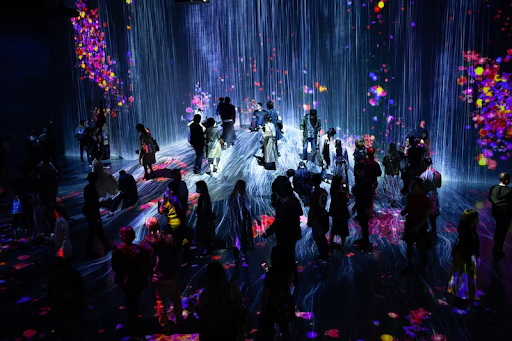Introduction
Projection mapping, once a niche technology reserved for grand events and artistic showcases, has rapidly evolved into a mainstream form of visual storytelling and entertainment. This captivating technique, also known as spatial augmented reality or video mapping, allows creators to transform ordinary surfaces into dynamic canvases for immersive experiences. As technology continues to advance at an unprecedented pace, the future of projection mapping promises to be nothing short of extraordinary. In this blog post, we’ll explore the exciting possibilities and trends that lie ahead for this innovative field.

Enhanced Interactivity
The future of projection mapping is set to embrace enhanced interactivity. Currently, most projection mapping experiences are passive, with viewers simply observing the visual spectacle. However, advancements in sensor technology, gesture recognition, and artificial intelligence will enable projection mapping to become more interactive. Imagine a world where viewers can manipulate the projected visuals through hand gestures, voice commands, or even brain-computer interfaces. This level of interactivity will blur the lines between the real and virtual worlds, creating immersive and engaging experiences like never before.
Mixed Reality Integration
Projection mapping will seamlessly integrate with mixed reality technologies, such as augmented reality (AR) and virtual reality (VR). This convergence will allow for even more immersive and personalized experiences. For example, imagine wearing AR glasses that enhance the projection mapping display with additional information, animations, or interactive elements. The combination of physical and digital worlds will unlock a plethora of creative possibilities for artists, marketers, and storytellers.
AI-Driven Content Generation
Artificial intelligence will play a significant role in shaping the future of projection mapping. AI algorithms will analyze real-time data, such as audience reactions and environmental conditions, to adapt and optimize the projection content. This means that the visuals projected onto surfaces can dynamically change based on the mood of the crowd, the time of day, or even the weather. AI will also assist in real-time object tracking and recognition, making projection mapping more precise and adaptable to complex environments.
3D and Holographic Projections
Projection mapping has largely been two-dimensional, but the future holds exciting developments in 3D and holographic projections. Advancements in optics and projection technologies will enable the creation of lifelike 3D holograms that can interact with the physical world. This opens up new opportunities in fields like education, healthcare, and entertainment. Imagine medical students studying a 3D holographic projection of the human body or live holographic concerts that bring musicians to life in your living room.
Environmental Projection Mapping
Projection mapping will extend beyond physical surfaces and enter the realm of environmental projection mapping. Entire landscapes, buildings, and even cityscapes can become immersive canvases for storytelling and artistic expression. This has the potential to redefine the way we experience urban environments, turning cities into dynamic works of art that respond to events, seasons, and cultural celebrations.

Sustainability and Eco-friendly Solutions
As projection mapping becomes more widespread, there will be a growing emphasis on sustainability and eco-friendly solutions. Innovations in energy-efficient projection technologies and recyclable projection materials will reduce the environmental footprint of large-scale projection mapping events. Additionally, the use of renewable energy sources and smart control systems will help make projection mapping more sustainable and cost-effective.
Conclusion
The future of projection mapping is a captivating blend of art and technology that promises to redefine the way we experience the world around us. With enhanced interactivity, mixed reality integration, AI-driven content generation, 3D and holographic projections, environmental mapping, and a focus on sustainability, projection mapping is poised to continue pushing the boundaries of creativity and innovation. As we move forward, we can anticipate a world where projection mapping is not just a form of entertainment but a powerful tool for education, communication, and expression. The future is bright for this mesmerizing art form, and we can’t wait to see where it takes us.

